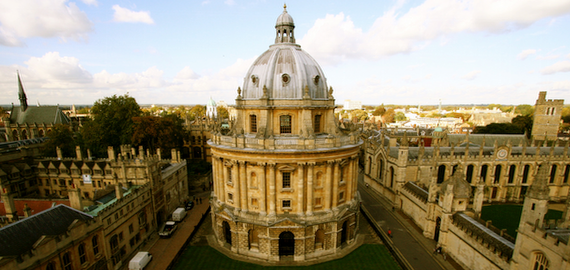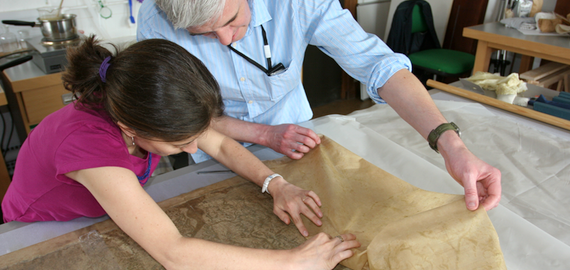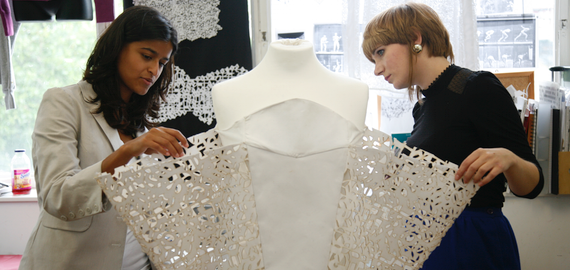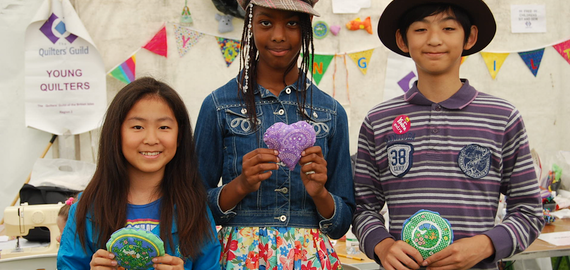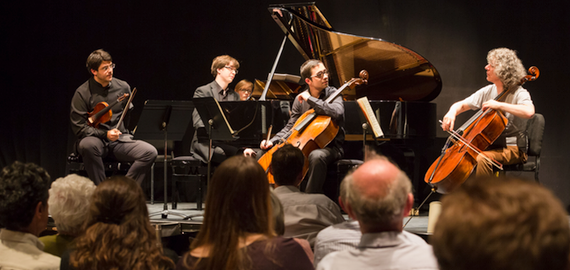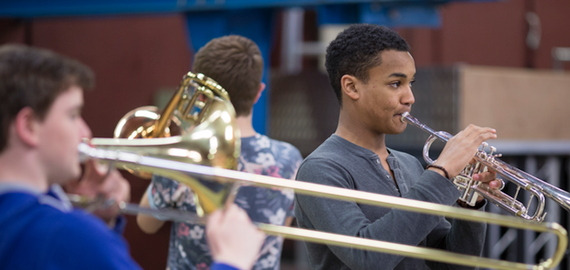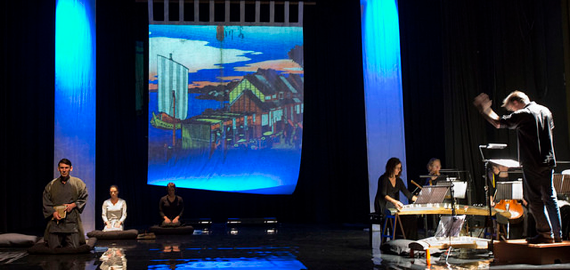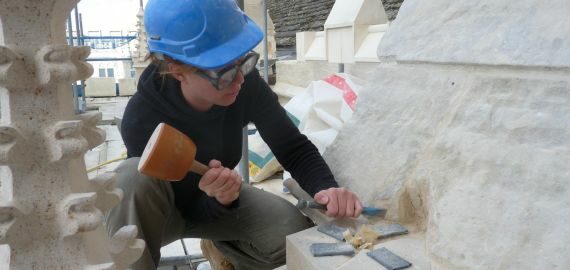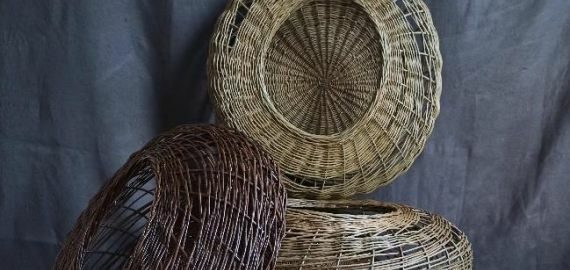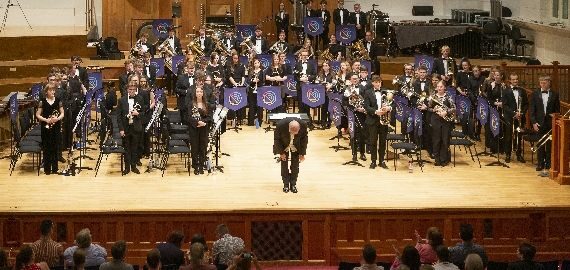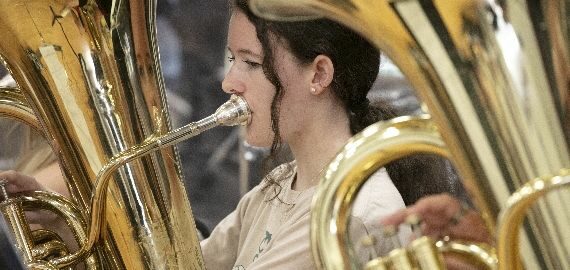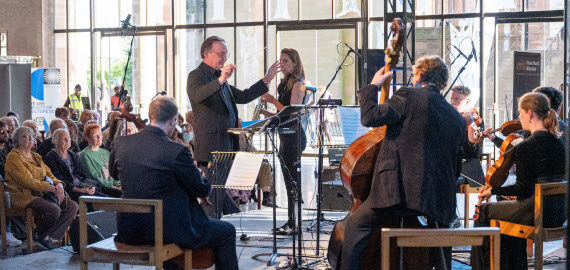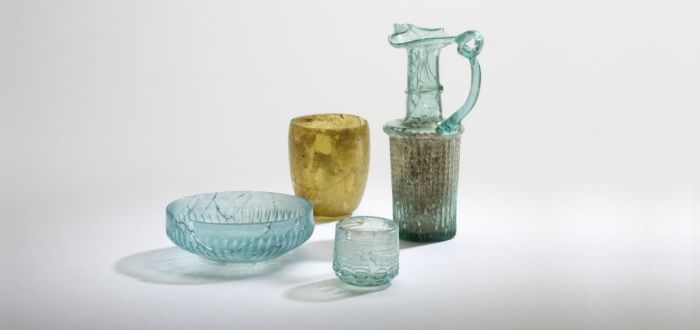Radcliffe Trust support for The Heritage Crafts Association
Heritage Crafts is the operating name of The Heritage Crafts Association, the national charity for traditional heritage crafts. Working in partnership with Government and key agencies, it provides a focus for craftspeople, groups, societies and guilds, as well as individuals who care about the loss of traditional crafts skills, and works towards a healthy and sustainable framework for the future.

Lorna Singleton, swill basket maker
In 2012 Heritage Crafts contributed to a major study on the economic importance of heritage crafts to the English economy, which showed that despite generating over £4.4 billion gross value added and employing around 210,000 workers in England alone, the sector was very vulnerable as the majority of craftspeople were working as sole traders or in microbusinesses, with many practitioners approaching (or past) retirement age having made no provision to pass their skills onto the next generation. Many were operating marginally profitable businesses and were therefore unable to step away from production in order to train someone without financial support, and the few government apprenticeships that existed only covered the salary of the apprentice.
As a result many crafts were dying out without the public having the opportunity to debate their value to society – economically, socially and culturally. In January 2015 Heritage Crafts was awarded a grant by the Radcliffe Trust to compile the Red List of Endangered Crafts, a strategic project to assess the vitality of traditional heritage crafts in the UK and identify those crafts which were most at risk of disappearing. Analysis of each craft – from those which were currently viable to those which were critically endangered – was made with the help of craftspeople, craft organisations, heritage professionals, funding bodies and members of the public who contributed to the research. Over 700 individuals and organisations from 169 crafts were contacted. Four crafts were identified as having become extinct in the last ten years, and seventeen crafts were identified as critically endangered. The research was completed in February 2017, with a full report detailing the methodology, crafts covered, findings and recommendations.
Heritage Crafts was awarded further funding from the Radcliffe Trust to hold a launch event for the Red List hosted by Heritage Crafts Patron the Lord Cormack at the House of Lords on 3 May 2017. Approximately 100 people attended the launch, including MPs and Lords, along with representatives from funding, craft and training organisations. Deborah Lamb, Deputy Chief Executive of Historic England, delivered the keynote speech, and Greta Bertram presented the findings and recommendations of the research. The illustrated publication was distributed at the launch. Following the launch, there was significant media interest in the Red List, with features in the national press (including The Times, The Guardian, The Daily Mail and The Telegraph), various magazines, and local and national radio (Woman’s Hour).
Heritage Crafts committed to renewing the Red List every two years and is currently working on the fourth edition funded by the Pilgrim Trust and due for publication on 11 May as part of London Craft Week. The 2021 edition of the Red List assessed 244 crafts to identify those which are at greatest risk of disappearing, 4 of which were classified as extinct, 56 as critically endangered, 74 as endangered and 110 as currently viable. It has continued to attract high levels of media coverage in the broadsheet press and with major broadcasters.
The success of the Red List allowed Heritage Crafts to attract further funding from the Dulverton Trust to employ Mary Lewis, Heritage Crafts’ Endangered Crafts Manager, to make interventions in struggling heritage crafts businesses to allow them to get over the immediate obstacles they are facing in order to achieve long-term sustainability. It also led to Heritage Crafts to create the Endangered Crafts Fund to provide small grants of up to £2,000 to aid in these interventions. The Radcliffe Trust contributed to this fund in 2019, and four grants were awarded with this money to alleviate crafts businesses at the onset of the COVID-19 crisis:
- Eve Eunson, Fair Isle chair maker – to record the skills of Fair Isle straw back chair making in a film that can be used to train others (Shetland).
- Horace Batten, boot makers – to train an apprentice boot tree maker who will go on to work in-house at the boot making firm (Northamptonshire).
- Lorna Singleton, swill basket maker – to buy a boiler and swiller’s mares (a special type of shave horse) to enable her to teach oak swill basket making to small groups (Cumbria).
- Tom Boulton, letterpress printer – to do a feasibility study into creating new wooden type for letterpress printing using CNC machining (West Sussex).

Eve Eunson, Fair Isle chair maker

Horace Batten, boot makers
To date the Endangered Crafts Fund has awarded 47 grants from a variety of funding sources. The fund has always been oversubscribed with eligible and deserving applications, but the COVID and energy crises have only exacerbated this with the 2022 applications peaking at 20:1 applications to grants available.
The success of the Red List also allowed Heritage Crafts to launch the President’s Award for Endangered Crafts supported by Heritage Crafts President the Prince Charles, the former Prince of Wales, with the third such award due to be presented on 30 January 2023.

Tom Boulton, letterpress printer
In November 2022 the Radcliffe Trust made another contribution to the Endangered Crafts Fund, focused specifically on the effect of rising energy costs of practitioners of some of the country’s most at-risk crafts skills. These grants, to be awarded in March 2023, will require successful recipients to plan and implement changes that will benefit both their environmental and financial sustainability, such as investing in more efficient machinery, developing reduced-carbon routes to market, or exploring the use of alternative materials while maintaining the heritage character of their practice.
Following the impact of COVID-19 on heritage craftspeople the energy crisis and ensuing cost-of-living crisis has had an unpresented effect of endangered crafts. In November 2022 Heritage Crafts surveyed its members on the situation. 88.9% predicted that the profitability of their heritage crafts businesses would worsen over the next six months. 11.1% said they thought that their profitability would stay the same and no-one said that they thought that their profitability would improve.
22.3% thought that the likelihood of their businesses surviving the next six months as a result of the crisis was less than 50:50. The reasons for this included:
- Rising production costs, including materials and labour
- Cost of electricity, heating and travel
- Rising workshop rents
- Drop in orders and sales, including because of the reduction in customers’ disposal income
- Unwillingness of the market to bear necessary price increases
- Impact of the media on people’s willingness to spend
61.1% of respondents were equally worried about rising costs and reduced income. 43.8% of respondents had changed their business model to help deal with the crisis, including becoming more reliant on online sales. 37.5% had been eating into cash reserves within the business in order to survive. 12.5% had already had to reduce their workforce. Heritage Crafts is seeking further funding to help alleviate the effects of the current situation.
Heritage Crafts is extremely grateful to the Radcliffe Trust for key contributions to its work since 2015 that have been instrumental in ensuring its continued success in supporting the heritage crafts sector, and the subsequent high profile of heritage crafts amongst the general public.



